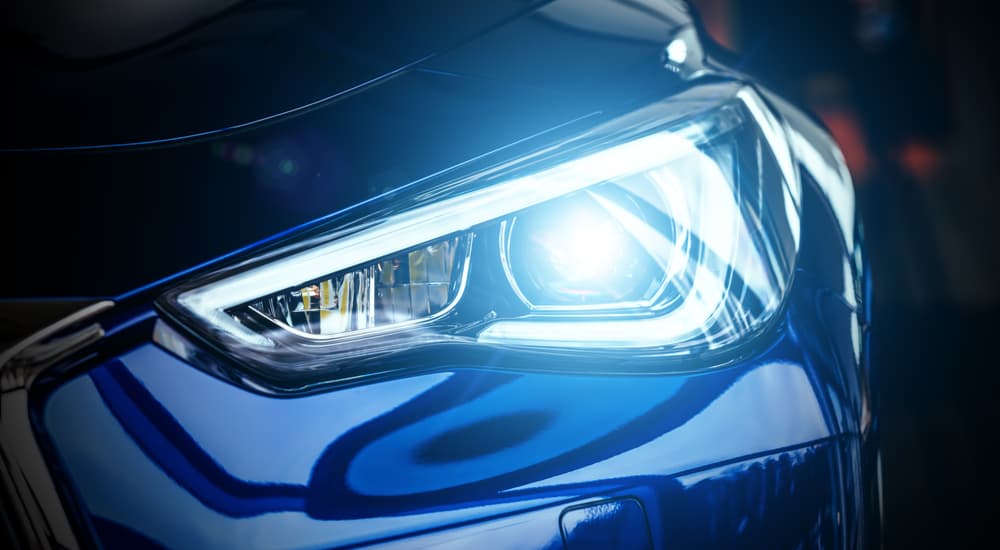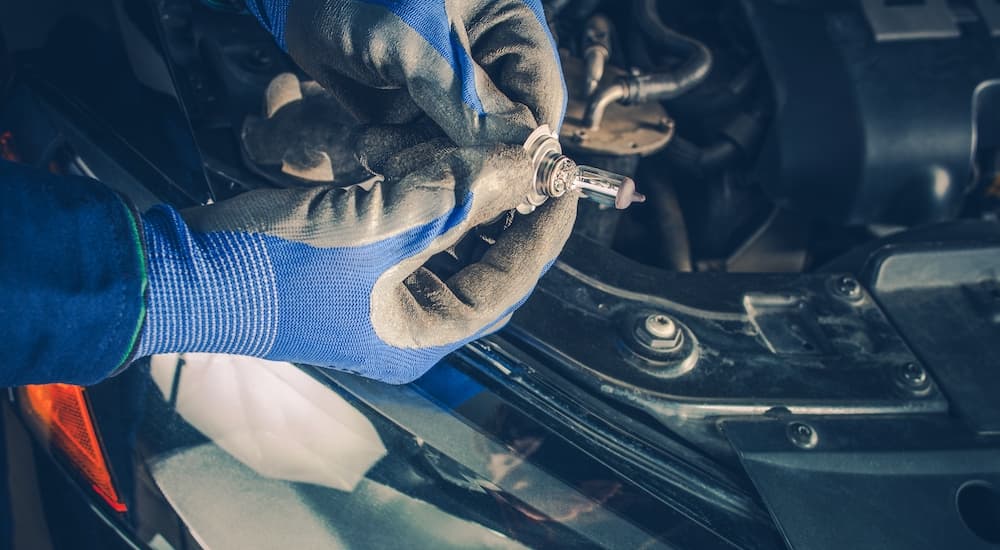Your vehicle’s headlights are one of those things that are easy to take for granted—something that you might not miss until they’re gone. But once they’re gone, believe me, you’ll miss them. The last thing you want is to be driving at night and find yourself suddenly steering in pitch darkness. At best, you’ll find yourself in a tense driving situation that will probably leave you shaken; at worst, you’ll end up in a serious collision wherein someone could be critically injured—or worse. That’s not even mentioning the potential for a cop seeing you and slapping you with a ticket.
Fortunately, proper care for your headlights and headlight replacement is quite simple and something you shouldn’t have to think about too much. Today, we’ll get into some important basic information about your headlights, like why you shouldn’t touch halogen bulbs and what you need to know to keep everything beautifully illuminated. Just remember to keep an eye on your lights, notice if other drivers are signaling you about something, and get ahead of major problems before they happen.
#1) Know the Bulbs You Use
There was a time when, if you were talking about the headlights of your car, then you were almost certainly talking about halogen bulbs, as that’s all there was to choose from. That time is long past, however, and these days, you have a ton of different options available for the lights on your vehicle. It’s important that you know what kind of bulbs you have on your car because this impacts how long they’ll last, how expensive they’ll be to replace, and which types of bulbs you need as replacements when the time comes.
Halogen is the old standard for headlights, and you’ll still find them on plenty of vehicles because they’re reliable, inexpensive, and easy to replace. High-intensity discharge (HID) headlights have become a popular option because they live up to their name by delivering very bright light—about two or three times brighter than halogen—of stark white.
Xenon lights are sometimes referred to synonymously with HID lights, but really, Xenon lights are a type of HID that uses Xenon gas for clean, bright light. Light-emitting diode (LED) headlights are common on new vehicles and have become very popular because they work well, are easy to customize and alter, and last a very long time.
#2) Handle Your Headlights Properly
Whether you’re checking your headlights or replacing them, it’s important that you handle them properly. First and foremost, never touch a headlight that’s on because it runs hot and can easily cause you serious burns. Similarly, headlights stay hot for a while after you switch them off, so be sure to give your lights time to cool off before you handle them. Lastly, it’s always a good idea to wear gloves when handling headlights to ensure you don’t damage them in any way.
Wearing gloves is even more essential when handling halogen bulbs, though it’s always a good idea. The quartz glass used to make halogen bulbs is incredibly clear and lets most light through; if you touch the bulb, you’ll leave oils from your skin behind where you touched it. Anyone who wears glasses knows that it’s impossible to touch them and not leave an oily fingerprint behind, no matter how clean their hands are.
Oil on a halogen bulb heats up more than the glass and creates a hotspot that will eventually fail and crack, releasing the halogen gas and killing the bulb. Touching a halogen bulb won’t make it immediately explode or anything, but it will shorten the lifespan of your headlight. If you do accidentally touch a halogen bulb with bare skin, be sure to wipe it off with some rubbing alcohol to get all of the oils off.
#3) Recognize Failing Headlights
When it comes to headlight replacement, one of the most important things is recognizing when it’s time for new bulbs. The simplest and most obvious sign that your bulbs need to be replaced is that they’ve grown noticeably dimmer than usual. Your headlights will typically dim slightly over time, but it can be so gradual that you don’t even realize it. Park close to a wall ahead—facing it—and turn on your lights to get a good sense of just how bright they still are.
You might also notice uneven brightness from your headlights or fluctuation in how bright they are, which typically means they’re on their way out. The worst way to realize you need to replace a headlight is when it burns out and goes completely dark, but that can happen. Unfortunately, dimming headlights can also indicate other problems like a dying battery or an electrical system issue. You can use a tester to check and see how your headlights are doing, or go to a shop you trust and have them test your headlights to see if it’s time for a replacement.

#4) Replace Your Headlights Together
If you notice one bulb going dim or having issues, then it can be tempting to just replace that one headlight and not the other one—this is especially true if you have expensive LED lights. This is a bad idea, however, and you’re better off biting the bullet and replacing both of your headlights at the same time. For one thing, if one of them is failing, then the other one is probably on the way out, too, and this keeps you from figuring that out the hard way. Replacing both bulbs together also ensures even brightness when you’re driving, rather than having half the road ahead of you much brighter than the other, which is safer.
#5) Ensure the Beams Are Aligned
New headlights are great and can make a huge difference in how well you can see the road before you, but it’s vital that they’re installed properly. This doesn’t just mean securing them in place and connecting wires so they work; it also means checking their alignment to ensure they’re properly in place. Your headlight alignment adjusts how much it shines down on the road ahead of you, creating a balance between near and far illumination to provide you with the best night visibility possible.
Proper alignment not only ensures you’re safe but helps keep others safe, too. Improperly aligned headlights can shine too high up, potentially shining into the eyes of oncoming drivers. If you have recently replaced your headlights and notice drivers flashing their brights at you, then it could mean you’re blinding them, and they’re trying to let you know. If you’re not sure you have your headlights properly aligned, then head to a shop you trust and let a professional make the final adjustments to get things right.

Stay Safe, Stay Bright
Just like with any car maintenance or replacements, the purpose behind monitoring and replacing your headlights is to ensure you’re safe on the road. Most collisions—especially deadly crashes—happen at night and early morning, when visibility is reduced. It’s vital that your headlights work properly and shine brightly so that you can see the road and remain safe while navigating amongst other drivers.
This ensures that you—and everyone else sharing the road with you—can enjoy yourself behind the wheel and get home safely at the end of the day. It’s worth the expense and time it takes to replace your headlights to avoid a collision and keep getting the most from your car.

